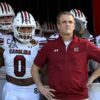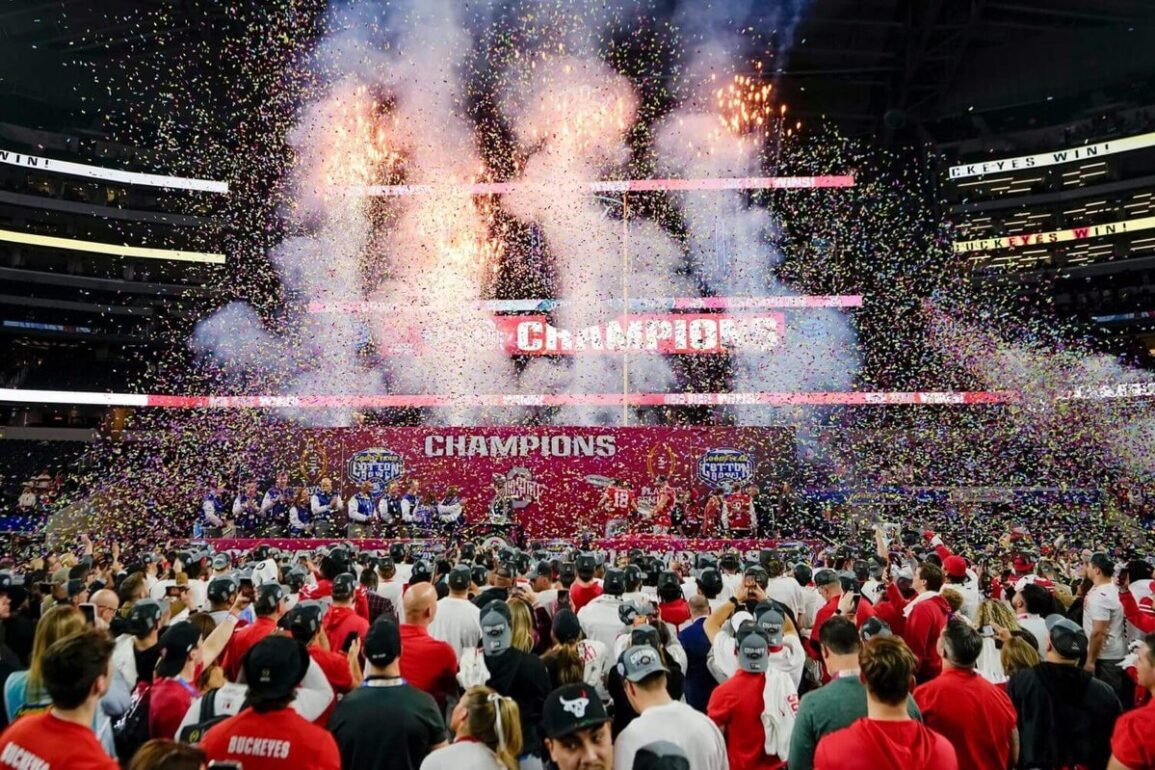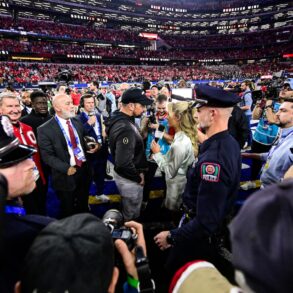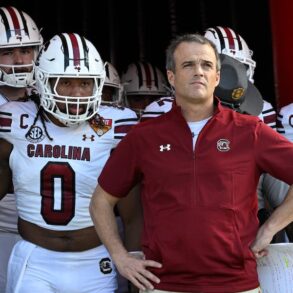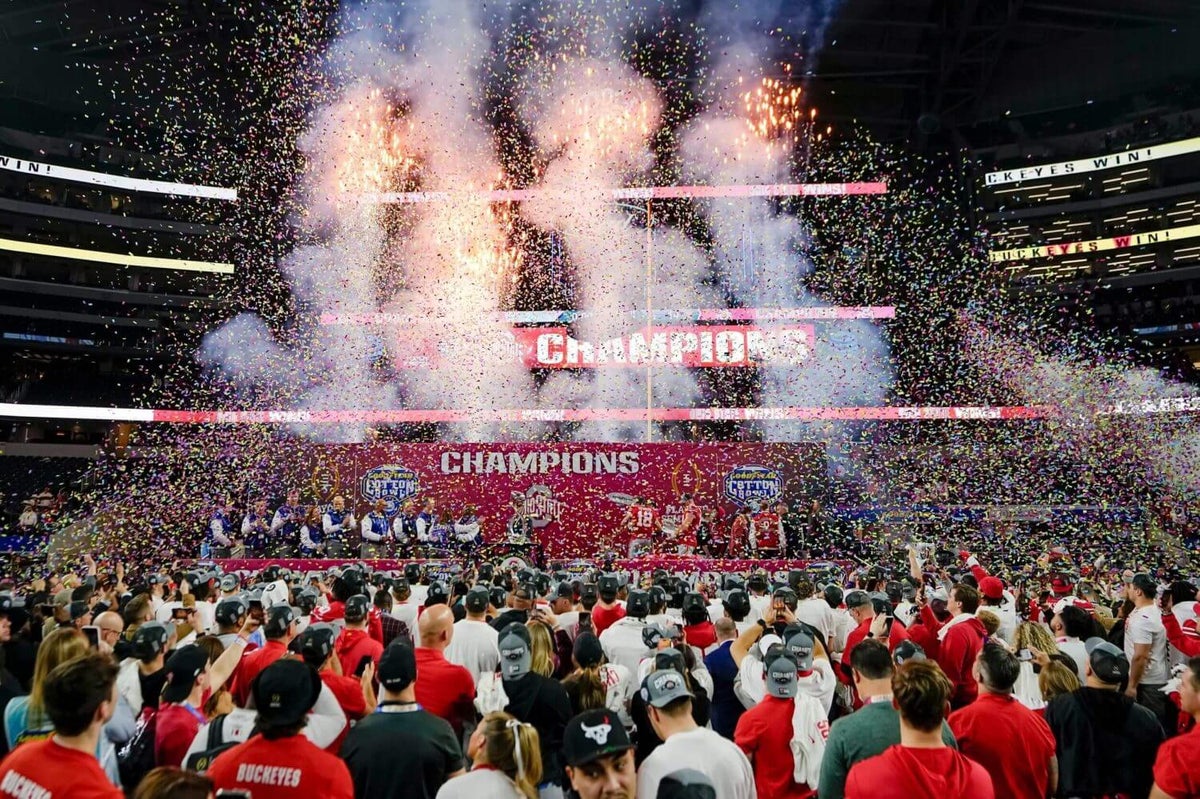
The offseason in college football — if such a thing exists anymore — is here.
In the new world of portaling players, name, image and likeness payments, school-athlete revenue sharing rumblings and a still evolving College Football Playoff format, the news never really stops.
Before Kansas State and Iowa State kick off the 2025 season in Dublin, Ireland, on Aug. 23, the biggest events in college football could come out of a Northern California federal court and Capitol Hill.
Advertisement
Here’s a user’s guide to the offseason, from draft season to talking season, with important dates.
Ongoing: Conference realignment. I hate to jinx it, but aside from the Pac-12 needing to find at least one more football-playing school to reach the minimum required to be recognized as a Football Bowl Subdivision conference, this could be a quiet year for FBS-level realignment, with the Power 4 leagues all locked into television deals that extend at least until the 2029-30 school year.
But what about the ACC, you say, where Clemson and Florida State are both suing the conference (and the conference is countersuing the schools)? First off, the sides have at least had some discussions about settling those legal disputes with a new revenue-sharing structure that would reward schools for TV exposure. If those suits are not settled, there is a long road ahead before they are resolved in court, and nobody is inviting any ACC schools to join if they are still entangled with their current conference.
Today (Jan. 24): The deadline for players from Ohio State and Notre Dame to declare for the NFL Draft.
The deadline for everybody else has passed, and 70 underclassmen are locked in, including Texas quarterback Quinn Ewers.
The number of underclassmen declaring has dropped the last few years, from consistently around 100 (or more) to fewer than 150 in the past two seasons combined, now that NIL rules allow players to pick up a paycheck while staying in college.
Feb. 19: Athletic directors from the SEC and Big Ten meet in New Orleans. The conferences would ideally align their positions as much as possible without running into antitrust issues on items such as the future of the College Football Playoff format.
Starting in 2026 when the Playoff’s new contracts kick in, the Big Ten and SEC are in position to basically run the CFP with unanimity by the management committee no longer required. Later in February, the 10 FBS conference commissioners and Notre Dame’s AD, who make up the committee, are expected to hold an in-person meeting in Dallas. They’ll start digging into possible tweaks for next season (among the more pressing topics: seeding) with an eye toward more major changes that would be implemented in 2026, such as expanding the field to 14 or 16 and possibly giving conferences multiple automatic bids.
Advertisement
Expect at least a couple more in-person meetings into the spring.
Feb 24-28: The NCAA Football Rules Committee meets. The hottest topic figures to be what to do about teams faking injuries to slow down opposing offenses. The committee and the conference commissioners who oversee officiating have been reluctant to implement rules that would force players who stop play by going down with apparent injuries to sit out multiple ensuing plays or maybe even the rest of a series. But faking injuries has become such an epidemic that concerns about actually injured players trying to fight through it because they don’t want to miss multiple plays may not stop a rule change.
Feb. 24-March 3: The NFL combine revs up draft season, the time of year college football fans and media find out the players they swore were good aren’t as good as some players that they swore were not-so-great because: traits!
April 7: The scheduled date for a final approval hearing for the settlement agreement of House v. NCAA and two other antitrust lawsuits. Formal objections are currently being filed, and the deadline for filing is Jan. 31.
If Judge Claudia Wilken signs off on the settlement, NCAA schools will be permitted to share up to $20.5 million with their athletes during the 2025-26 school year. Schools are already making plans to do so, with most of the money expected to go to football players.
If the deal is not approved on April 7, at the very least it could complicate the implementation of revenue-sharing. At most, it could blow up the plan and send schools scrambling. Odds are, Wilken signs off.
If/when the settlement is approved, expect more activity in Washington, D.C. With Republicans now in charge of the White House and both chambers of Congress, chances have increased that a bill could be passed and signed into law that gives the NCAA and conferences back the ability to govern college sports while pre-empting state laws and providing some antitrust protection.
Advertisement
Rest assured, there will still be more lawsuits.
April 16-25: The spring transfer portal window opens. Last year it appeared that there was a memo that went out to defensive tackles, advising them to jump into the portal during the spring window. There is always some interesting movement around this time, though the volume of players going in could be unusually high for two reasons:
First, approval of the House settlement would trigger new roster limits that could force teams to cut dozens of players. Obviously, those cuts are mostly going to come from the bottoms of rosters, including walk-ons and little-used scholarship players.
Second, after the settlement the NCAA could move quickly to pass legislation that would grant Division I athletes in all sports five years of eligibility, eliminating waivers and redshirts. That could go into effect immediately, suddenly granting hundreds of college football players an extra year of eligibility.
April 24-26: The NFL Draft. Officially say goodbye to your favorite players, and get one last reminder of why Ohio State won the national title.
May 27-30: The SEC spring meetings traditionally start the day after Memorial Day. Other conferences usually meet in May, but the SEC generally goes out of its way to make a show of its offseason gathering of coaches and administrators. Yet again, expect the conference to be weighing whether it should increase the conference football schedule from eight games to nine.
July 8-9: Football media days start, with the Big 12 having already announced its will be held in Frisco, Texas, the week after a long Fourth of July weekend. The four-day SEC event is slated for July 14-17 in Atlanta.
Aug. 11: Projected release of the preseason AP Top 25.
(Photo: Adam Cairns / Columbus Dispatch / USA Today Network via Imagn Images)
This post was originally published on this site be sure to check out more of their content.



